Name MV Georgic Yard number 896 Maiden voyage 25 June 1932 Length 217 m Builder Harland and Wolff | Completed 10 June 1932 Launched 1931 Beam 25 m | |
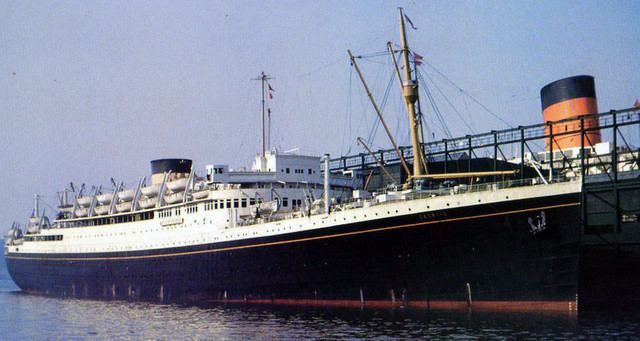 | ||
Owner 1932-1934 White Star Line1934-1949 Cunard White Star Line1949-1956 Cunard Line | ||
Built at Harland and Wolff shipyard in Belfast, the MV Georgic was the last ship built for the White Star Line before its merger with the Cunard Line. She was the running mate of Britannic. Like Britannic, Georgic was a motorship, and not a steamer, fitted with a diesel electric powerplant.
Contents
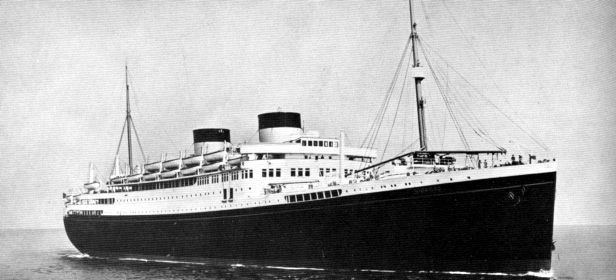
Construction
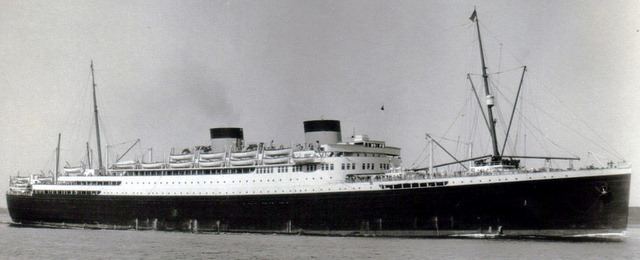
She was built for the Liverpool–New York route. She was launched in 1931, and, after fitting out sailed her maiden voyage on 25 June 1932. In 1933, she replaced the aging RMS Olympic on the Southampton–New York route for a brief time while that vessel was overhauled.
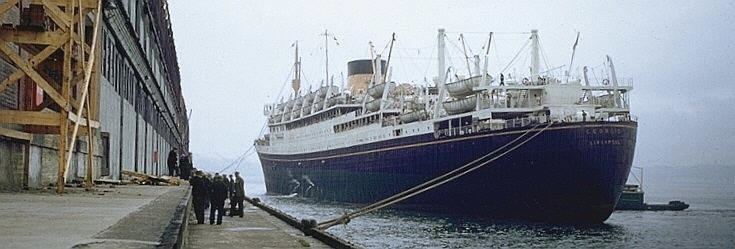
Her design was very similar to that of Britannic, with a sleek profile and two squat smokestacks. She was equipped with a diesel power plant which powered electric motors, which in turn drove the propellers. She recorded a top speed of 19 knots on her speed trials. At 711 ft long (217 m) and 27,759 gross tons she was not the largest liner of her time, but was considered very stylish and a favourite among passengers. She helped keep the White Star Line afloat during the Great Depression.
Early career
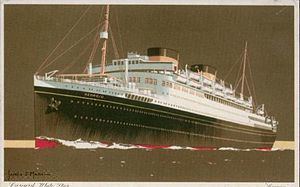
In January 1933 Georgic began to sail the Southampton to New York route. This was mainly in order to replace the larger RMS Olympic during her major overhaul. On 10 May 1934 the ship became part of the fleet of the newly amalgamated Cunard-White Star Line, and Georgic joined Britannic on the London, Southampton, New York route. This made the ship the largest to use the River Thames. In August 1939 Georgic returned to the Liverpool to New York route and made five round trips before being requisitioned for trooping duties in the conflicts of World War II.
Wartime career
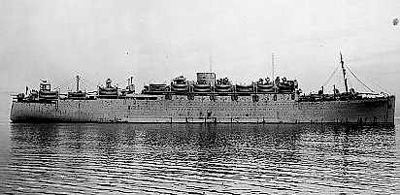
After the outbreak of World War II, Georgic was requisitioned by the Admiralty for troopship duties. On 7 July 1941, Georgic was docked at Port Tewfik. German aircraft were sweeping the skies in that area and spotted Georgic, which they proceeded to attack, resulting in two bombs being dropped, with one striking Georgic's stern. A large fire ensued, spreading to the ship's dummy funnel which was holding ammunition. This ammunition exploded, seriously damaging the stern area of the vessel. The order was given to abandon ship, with Georgic now sinking by the stern. The ship settled at the bottom of the shallow water and was left to burn out.
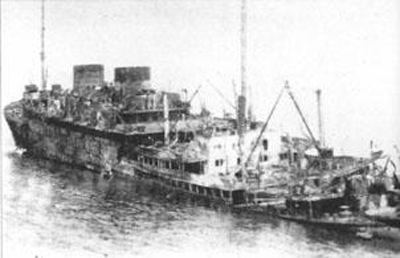
On 14 September, the damage to Georgic was assessed and during October the ship had its holes and openings temporarily plugged and then the water was pumped out to refloat the vessel. An inspection of the ship structure and its engines was then carried out and a decision was made to send the ship back to Harland and Wolff in Belfast for complete refurbishment into a troopship.
Refurbishment and later service
In the next month Georgic had her hull made watertight and more temporary plugging of the hull was carried out. Georgic was then towed stern first to Port Sudan where she had major structural repairs carried out, and her hull and engines were made ready for service. After a year she arrived in Bombay, where further repairs were carried out. In January, 1943 she left Bombay for Belfast, where Harland and Wolff would give her a complete refit. After December 1944, her exterior was altered considerably, with the forward funnel removed and the foremast shortened to a stump. Georgic resumed service as a troop transport, carrying out war duties between Italy, the Middle East and India until 1948, after which she was returned to Cunard-White Star to begin the immigrant service between Liverpool, Australia, and New Zealand. In May 1950, however, the ship had returned to the Liverpool to New York service for Cunard. Both she and her sister would retain their White Star Line colours, and flew their original company flags until both vessels were retired. During the summer of 1951, the ship sailed on the Southampton to New York and Southampton to Halifax routes. In November 1951, Georgic was commissioned to carry troops for the Commonwealth Division, fighting for the United Nations in the Korean War. She had a brief stint transporting troops home from Japan and then was leased to the Australian Government carrying immigrants from Liverpool to Australia during 1955. She was laid up at Kames Bay, Isle of Bute, pending disposal. She was scrapped in February 1956 at Faslane.
